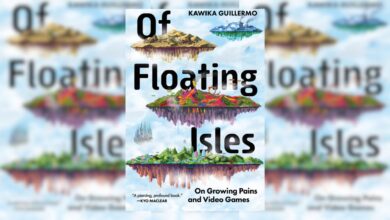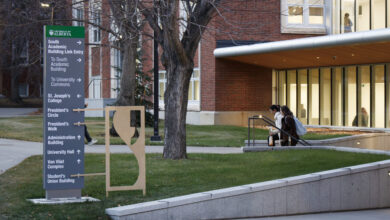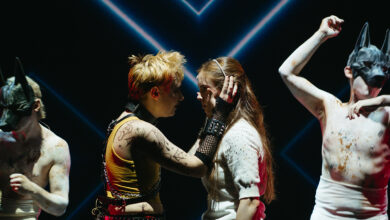Visual art exhibition “Biomythography” enchants FAB Gallery
U of A Augustana professors' work encounters myth and masculinity
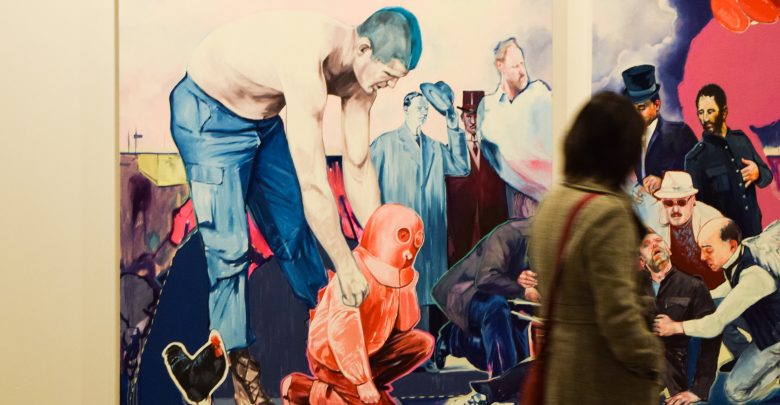 Jean Sumbilla
Jean SumbillaWhat: Biomythography
Who: U of A (Augustana) fine arts professors Julian Forrest and Keith Harder
When: October 4 to 27, 2018
Where: FAB Gallery
Admission: Free
Gallery Hours: Open 12:00-5:00 p.m. from Tuesdays to Fridays, 2:00-5:00 p.m. on Saturdays
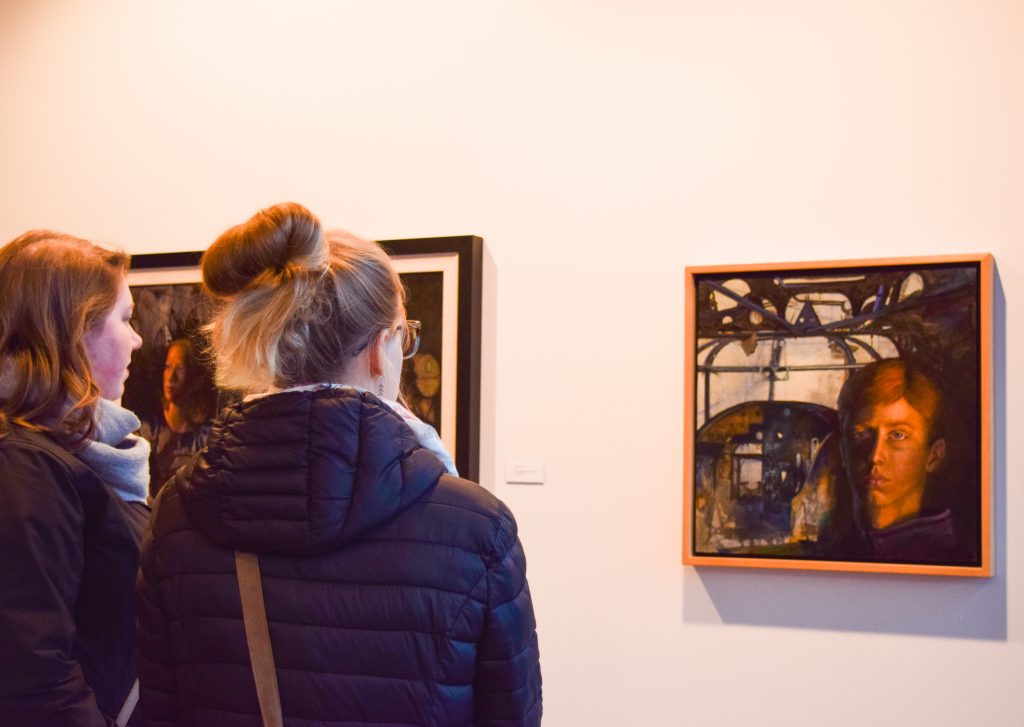
Visual art exhibition Biomythography provides a reflective, hopeful, and sometimes amusing look at the past and the pain that lives there.
The exhibition features two series by Keith Harder, ILL Winds and Anamnesis, which include several of his works created over the last decade. Straddling the lines between subtlety and grandeur, ambition and restraint, Harder’s series are bursting with mythological imagery. They’re part of Harder’s larger project, Children of Icarus, focusing on “flight, the skies, and all of the metaphors that go along with that sort of thing.”
“Metaphorically they [both] deal with the degradation of time, the loss of memory, the struggle to remember things, forgetfulness, and the sense of loss that comes with that,” Harder says. “As for ILL Winds, I was looking for imagery that dealt with a sense of power, threat, and peril, but at the same time, something magnificent.”
While darkness and the destructive power of both people and nature are an unavoidable part of Harder’s work, he hopes audiences can leave the exhibit with an impression that isn’t quite so bleak.
“There’s a saying that in every cloud there’s a silver lining, and if you look at the clouds, you’ll see that they sparkle,” Harder says. “So I imagine that people can draw on that allusion as well.”
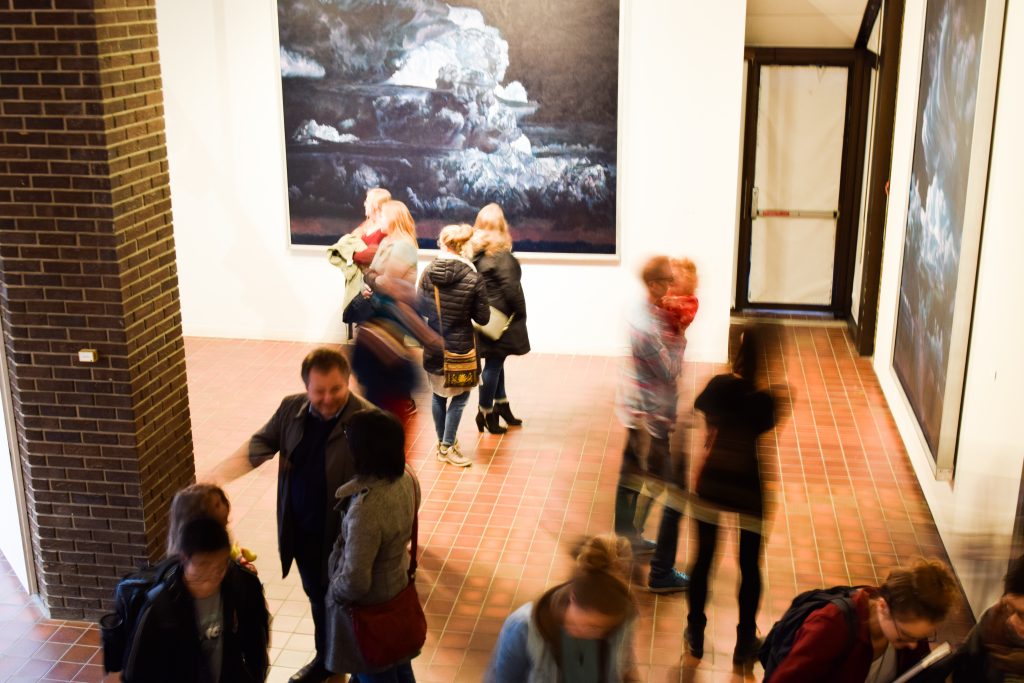
In Julian Forrest’s False Dilemma, surreal colours and comic depictions of ‘the man’s man’ cleverly satirize symbols of hypermasculinity. While Forrest’s art reflects on how notions of masculinity have impacted his own life, it also considers what he calls the “loss of manhood,” asking whether or not that should be cause for celebration, mourning, or something else entirely.
Forrest’s works are influenced by personal and fictional stories of migration. Forrest says re-reading “hero’s journey” stories like Heart of Darkness and Lord of the Flies, tales where the protagonist ventures into the wild and finds adventure but then returns to normalcy, inspired his latest series of paintings.
“To me [these stories] kind of mirrored my sense of migration from east to west that’s happened in my case, and my own dad’s migration from Ireland to Canada,” Harder says. “I’m always curious about those kinds stories.”
But despite his work’s introspective quality, it remains comical and light, the characters and colours never saying anything without a playful smile.
“If you see the [art], it’s very theatrical,” Forrest says. “I work with actors from the Edmonton theatre community and they act out things I suggest, or they come up with their own suggestions because they know my work, and we riff and there’s kind of a fun aspect to all of that.”
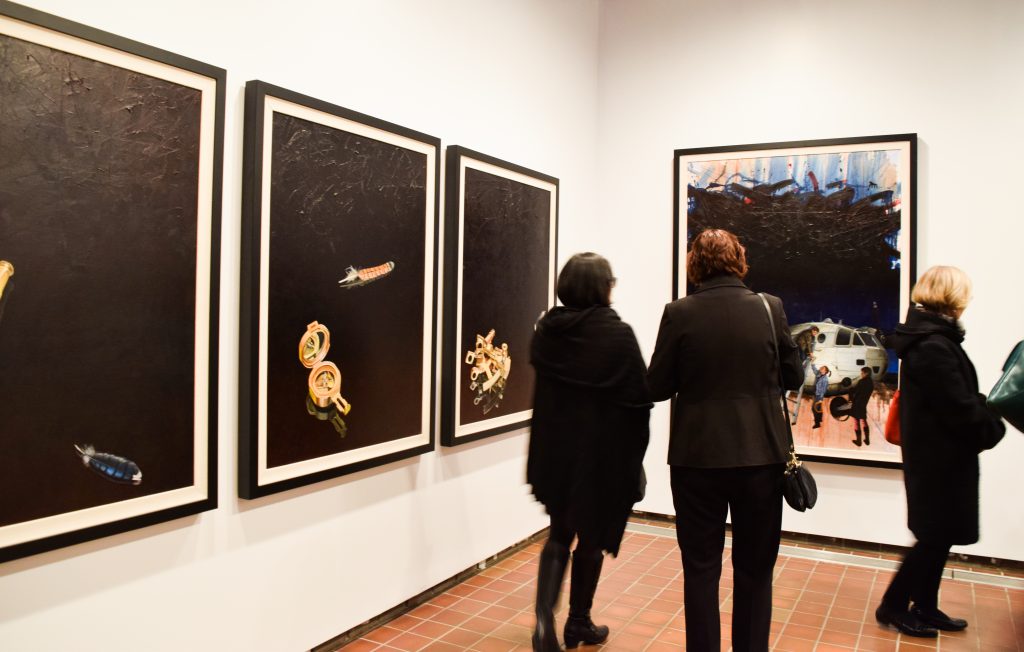
Although they’re on display alongside each other, Harder’s and Forrest’s exhibitions both stand alone. Yet both professors didn’t hesitate to acknowledge their ties as professors at Augustana Campus. While Harder and Forrest know about each other’s work, Biomythography is the first exhibition in which they’ve put their art together in the same space at the same time.
“You’re beside one another all the time [as colleagues],” Forrest says. “And even though our work is different, I think that thematically we are both looking at some kind of idea of loss.”
Harder says the show is really about the Augustana Campus. According to Harder, people often seem to forget that Augustana is part of the U of A, and they don’t know about its strong visual arts program.
“[Biomythography is] a way of bringing that kind of consciousness [of Augustana] to the public and to the larger university community as well,” Harder says.

